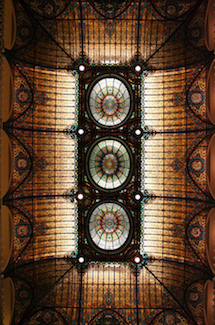Product Description
Marcus & Co Art Nouveau pendant necklace, Handwrought 18K yellow gold set with a large cabochon natural emerald center stone, side details set with 43 diamonds, cabochon emerald pendant drop, signed, c. 1900



Marcus & Co Art Nouveau pendant necklace, Handwrought 18 K yellow gold set with a large cabochon natural emerald center stone (approx. 30+ carats TW, G.I.A. certificate, moderate clarity enhancement, 18.30 x 18.20 x 12.20mm) surrounded by green enamel details with gold looping bezel mounts and platinum topped diamond side details set with 43 diamonds (approx. 6 carats TW), cabochon emerald pendant drop (approx. 15 carats TW) with a green enamel and gold capped top, elaborate looping 18K yellow gold chain, signed, c. 1900
Marcus & Co Art Nouveau pendant necklace, Handwrought 18K yellow gold set with a large cabochon natural emerald center stone, side details set with 43 diamonds, cabochon emerald pendant drop, signed, c. 1900
MARION FALLER USA
HOLLIS FRAMPTON USA
Apple Advancing 1975
Signed: 782. Apple advancing [var. “Northern Spy”] from “Sixteen Studies from Vegetable Locomotion,” 1975 by Marion Faller & Hollis Frampton) on back of photograph; Marion Faller Hollis Frampton (in script on the bottom of the back of the photograph)
H: 10 7/8” x W: 13 7/8” (unframed)
H: 15 3/16 “ x W: 20 15/16” (framed)
TAPIO WIRKKALA (1915-1985) Finland
KULTAKESKUS OY Hämeenlinna
Vase 1968
Sterling silver in a streamlined sculptural form, canted cylindrical attached walnut plinth.
Marks: TW monogram, 916H (Finnish silver assay
mark), maker’s touch marks
Illustrated: Zilver uit Finland, exhib. cat., Leo De Ren (Antwerpen: Provinciaal Museum Sterckshof, 1995) p. 18.
H: 10 1/4″ x Dia: 3 1/4″
Price: $3,900
